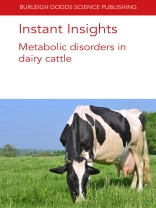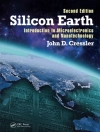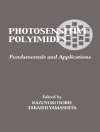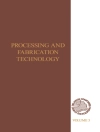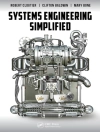This specially curated collection features four reviews of current and key research on metabolic disorders in dairy cattle.
The first chapter reviews the prevalence, etiology and effects of ruminal acidosis, as well as ways to counteract it through regulation of ruminal p H. The chapter includes a case study on subacute rumen acidosis (SARA) in the post-partum phase of the transition period.
The second chapter assesses the main pathways for rumen fermentation which is a major factor in efficient transformation of nutrients. It discusses factors influencing the efficiency of microbial growth as well as the interactions between rumen energy and nitrogen metabolism in ensuring efficient digestion and avoiding metabolic disorders.
The third chapter investigates the genetics of improving feed intake efficiency which has significant potential in reducing metabolic disorders. The chapter reviews key challenges in developing genomic selection indices for feed intake, including recording feed intake, pooling genetic data and establishing genomic breeding values for feed efficiency.
The fourth chapter discusses how cereal grains impact feed efficiency in cattle. It reviews how cereal grains can be used to improve feed efficiency and the microbiology of cereal grain fermentation. The chapter also discusses ways of avoiding acidosis and other negative feed effects.
विषयसूची
Chapter 1 – Disorder of digestion and metabolism in dairy cattle: the case of subacute rumen acidosis: Gregory B. Penner, University of Saskatchewan, Canada; 1 Introduction 2 Prevalence, aetiology, and biological consequences of ruminal acidosis 3 Regulation of ruminal p H 4 The dogma of ruminal acidosis 5 Case study: SARA risk in the post-partum phase of the transition period 6 Other examples of SARA risk induced by low feed intake 7 Conclusion and future trends 8 Where to look for further information 9 References
Chapter 2 – Factors influencing the efficiency of rumen energy metabolism: Emilio M. Ungerfeld, Instituto de Investigaciones Agropecuarias (INIA), Chile; and Timothy J. Hackmann, University of California-Davis, USA; 1 Introduction 2 Main pathways of rumen fermentation 3 Methane 4 Factors influencing the efficiency of microbial growth 5 Interactions between rumen energy and nitrogen metabolism 6 Conclusion and future trends 7 Where to look for further information 8 References
Chapter 3 – Advances in dairy cattle breeding to incorporate feed conversion efficiency in national genetic evaluations: Mike Coffey, Scotland’s Rural College (SRUC), UK; 1 Introduction 2 The importance of feed efficiency as a target for breeding 3 Recording feed intake 4 Pooling genetic data on feed intake 5 Establishing genomic breeding values for feed efficiency 6 Future trends 7 Conclusion 8 Where to look for further information 9 References
Chapter 4 – The use of feedlot/cereal grains in improving feed efficiency and reducing by-products such as methane in ruminants: Kristin Hales, US Meat Animal Research Center – USDA-ARS, USA; Jeferson Lourenco, Darren S. Seidel, Osman Yasir Koyun, Dylan Davis and Christina Welch, University of Georgia, USA; James E. Wells, US Meat Animal Research Center – USDA-ARS, USA; and Todd R. Callaway, University of Georgia, USA; 1 Introduction 2 Types of cereal grains fed to cattle 3 Cereal grain production 4 Dietary factors affecting methane production by ruminants 5 The role of starch and forage in methane formation 6 H2 sinks in the rumen and methane production 7 Using cereal grains to improve feed efficiency and reduce methane production 8 Microbiology of cereal grain fermentation 9 Bacteria and archaea involved in fermentation 10 Feed retention time 11 Acidosis and other negative feed effects 12 Summary 13 Where to look for further information 14 References
